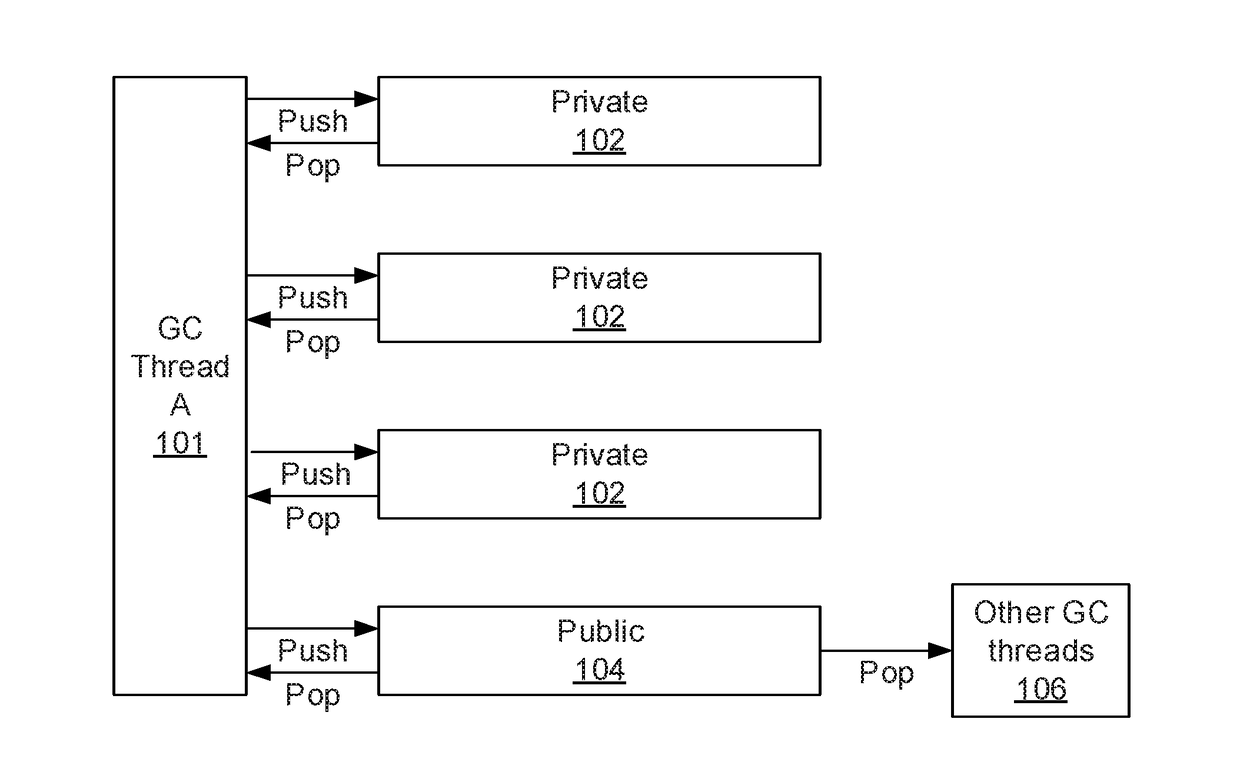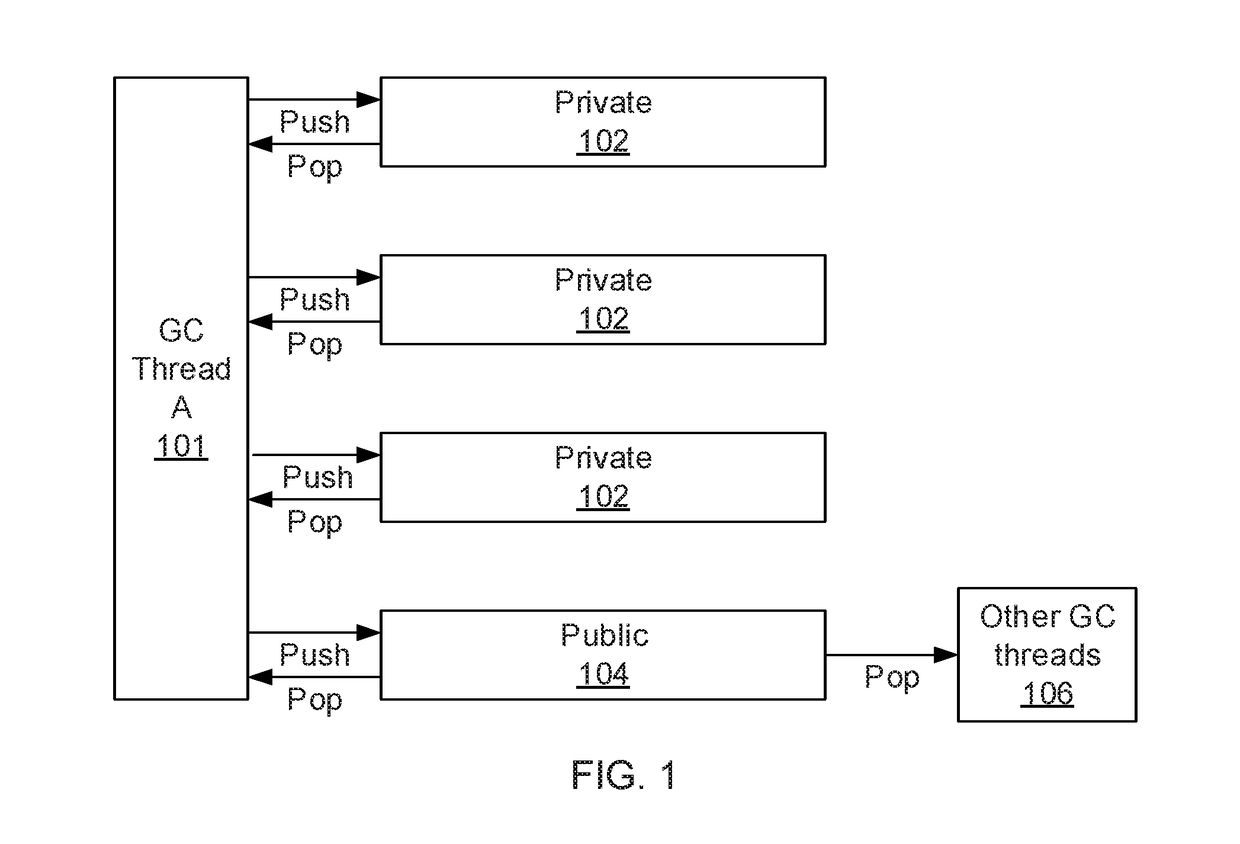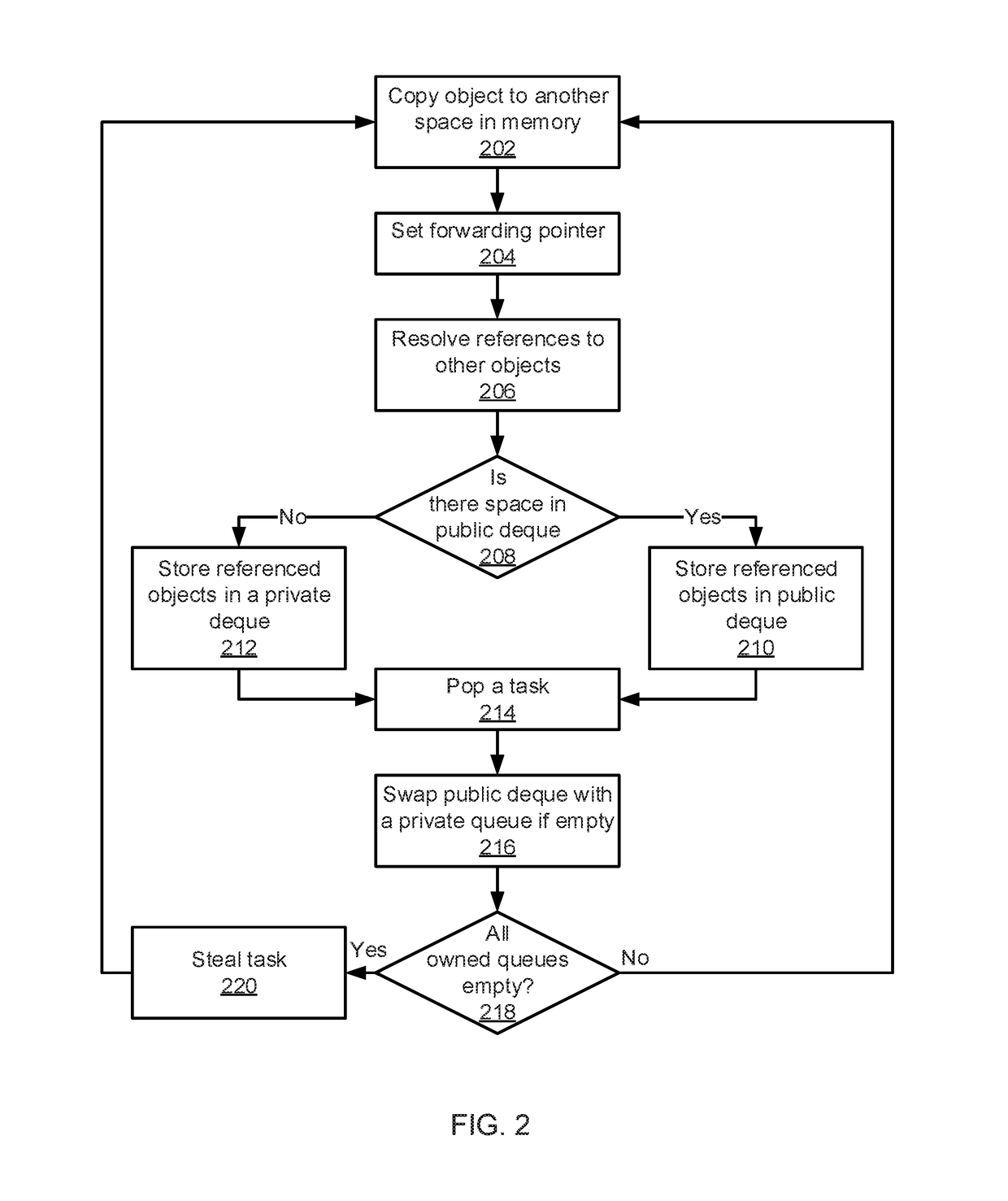Balanced double deques for eliminating memory fences in garbage collection
- Summary
- Abstract
- Description
- Claims
- Application Information
AI Technical Summary
Benefits of technology
Problems solved by technology
Method used
Image
Examples
Embodiment Construction
[0013]Embodiments of the present invention provide garbage collection in multi-threaded systems, where each garbage collector thread has multiple double-ended queues (hereinafter “deques”). Each garbage collector thread has multiple private deques that only it can access and one public deque that is accessible from all other garbage collection thread. Each garbage collector thread uses its own private deques by default. Memory fences are not needed for access to the private deques.
[0014]Generally speaking, a “memory fence” or “memory barrier” is an instruction that creates an ordering constraint for memory operations issued before and after the barrier instruction. In other words, all memory operations issued before the memory fence is created are performed before memory operations issued after the memory fence is created. This is useful because some processors may implement performance optimizations that change the order of operations within a thread. Memory fences are used in mult...
PUM
 Login to View More
Login to View More Abstract
Description
Claims
Application Information
 Login to View More
Login to View More - R&D
- Intellectual Property
- Life Sciences
- Materials
- Tech Scout
- Unparalleled Data Quality
- Higher Quality Content
- 60% Fewer Hallucinations
Browse by: Latest US Patents, China's latest patents, Technical Efficacy Thesaurus, Application Domain, Technology Topic, Popular Technical Reports.
© 2025 PatSnap. All rights reserved.Legal|Privacy policy|Modern Slavery Act Transparency Statement|Sitemap|About US| Contact US: help@patsnap.com



